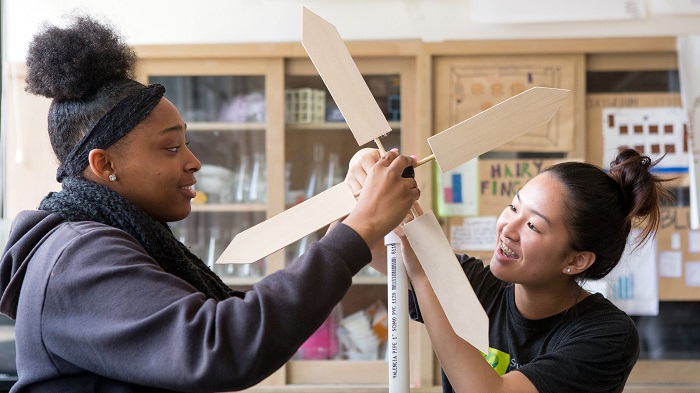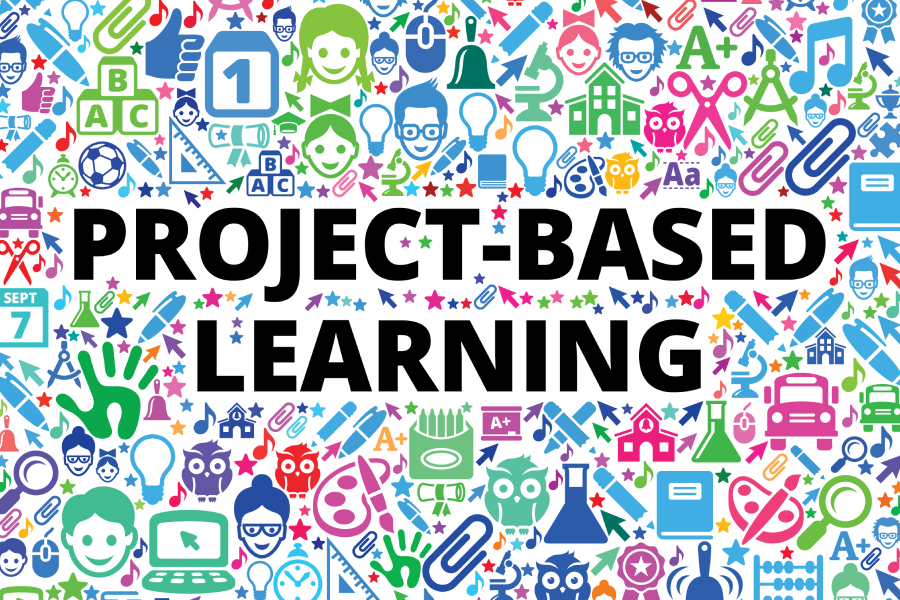Project-based learning is a method of learning in which students take an active role in their educational growth by identifying real-world problems and developing practical solutions to these problems. It encourages students in CBSE affiliated schools in Chennai (https://www.babajividhyashram.org/) to explore online resources and use educational technology. Therefore, project-based learning is becoming increasingly popular, and schools are incorporating it into their curricula.
Learning through projects is required in today’s school curricula and educational structures as it keeps students engaged and takes an active role in their education. It allows them to collect materials for their projects and prepare their presentations for evaluation through which they acquire skills that are aligned with the curriculum. Know more about how project-based learning prepares students for the real world with grit and rigor.
Benefits Of Project-Based Learning
PBL is a procedure that takes place over time and is based on the same idea as traditional classroom instruction. Project-based learning can overcome difficulties and can be used to engage students by breaking the project down into smaller parts, incorporating frequent checkpoints into the timeline design. However, project-based learning is quite challenging for elementary students, but they will be able to perform independently with proper guidance. Students collaborate to investigate real-world problems with project-based learning, and in the process,
- It encourages them to make their own decisions about working on their projects and demonstrating their understanding of the material.
- Project-based learning involves the practical application of knowledge and skills in real-world situations. The inquiry leads to deeper learning and applying knowledge. Their skills lead to creating products that communicate solutions to audiences.
- Learning by doing is a multidisciplinary pedagogical approach that encourages students to connect across multiple content domains.
- A project-based learning approach is well-suited for fostering intrinsic motivation in students because it allows them to become deeply involved with the target content.
- Project-based learning helps students develop 21st-century skills, such as teamwork, problem-solving, and social and emotional learning.
- According to a study conducted in 2011, learning with the project will make students apply their knowledge outside the classroom.
- Students gain critical thinking and problem-solving techniques through project-based learning, developing their sense of agency.
- Project-Based Learning (PBL) assists children in developing skills that will enable them to thrive in a future dominated by artificial intelligence and automation. They become well-versed in using technology for their day-to-day learning, which will aid them to cope with future technology.
- Project-based learning (PBL) is a way to enhance student learning by integrating interpersonal aspects with technology.
- It helps schools implement student-centered teaching and learning by working with schools to identify students’ learning needs and preferences.
Ideas For Successful Project-Based Learning By Best Schools In Chennai
Project-Based Learning (PBL) is a method of teaching and learning that takes an interdisciplinary approach to learning. It is possible to integrate project-based learning into the classroom by setting goals and focusing on growth. A teacher has to look at project-based learning from the point of view of the students’ peers to make it easily understandable for them. Teachers should understand that project-based learning is less difficult and is well within their capabilities. There are various useful resources which include project ideas for students, available widely on the internet. Thereby, providing students with real-world examples of projects to learn and apply will help them develop a deeper understanding of concepts.
Including content that isn’t taught in regular classes is the key to effective project-based learning. Using this comprehensive knowledge about a subject, students will calculate how much each additional topping will cost them. Doing all the above will enable them to work better on real-world problems and challenges. A few ideas on how to do these are:
- Provide students with an opportunity to put their geometry knowledge to use by designing a new playground for the school. Asking them to write their math books is a great way to integrate math with visual and language arts. Another powerful technique will be to make each student perform career research and write a brief report on how professionals use mathematics in their daily duties.
- Satisfy students’ natural curiosity for dinosaurs, as well as their likely affection for them, by having them research and argue what caused their extinction. Ask them to create a visual display then to illustrate their findings.
- As part of their drama, history, and creative writing classes, students should script a portion of a significant historical event to practice their skills. This project, which requires students to imagine newly discovered ancient civilizations, brings history, anthropology, and psychology together in a cohesive whole. Encourage them to select a simple machine – such as a pulley, lever, wedge, or another ancient tool – to use in the exercise.
- Students can simulate writing real business proposals, in which they can learn about persuasive and informational writing and how it is used in the real world.
- Please encourage students to assume the roles of fashion designers and marketers by presenting them with a scenario that combines business with visual and language arts disciplines.
- While teaching science, ask students to develop a research-supported habitat plan for an animal.

Characteristics And Outcomes Of Project-Based Learning
Project-based learning is an instructional method where students work in small groups to solve problems and acquire knowledge. Here the problem is presented before they learn the material, unlike the traditional problem-solving approach. Project-based learning can shift students’ focus from developing essential skills to working on a product with seven essential elements. When used in the appropriate setting, project-based learning can be extremely beneficial to students.
According to research, the faculty of a STEM-enriched, project-based learning environment spent significant time planning and implementing the process. They found that each student should select the main course, two sides, and a dessert from the options provided. Then with a learner-centered approach, they have to conduct research, integrate the theory to develop a viable solution for the problem. However, there are some perceived advantages and disadvantages that deserve to be discussed.
- Project-based learning is not for everyone, as it requires more coaching with fewer instructions.
- It is positively correlated with student achievement, particularly in schools serving high-poverty communities. Therefore, project-based learning is aligned with international standards for technology skills and is available in the best schools in Chennai, Bangalore, Hyderabad, etc., which has a global collaboration.
- Some critics argue that students’ grades should not be based on project-based learning products as it incorporates different ideologies to understand the concept.
Importance Of Entrepreneurial Skills Through Project-Based Learning
Project-based learning is the fundamental principle, allowing children to turn their ideas into tangible products and businesses. Experts say that students benefit from entrepreneurial learning and that schools should incorporate leadership and business education into the curriculum. While an entrepreneur is typically a well-established business magnate, students challenge the status quo by starting businesses as early as kindergarten and continuing through the 12th-grade level. Consider implementing entrepreneurial learning with students for more than just teaching good habits. Students need to develop the same skills as small business owners to succeed throughout their careers as:
- Entrepreneurial education helps students achieve important social and emotional learning objectives.
- It is a cross-curricular endeavor that develops students’ communication skills and desire to create something unique.
- Students learn how to think outside of the box and broaden their perspective on the world.
- Given that math class is frequently regarded as boring and theoretical by students, with little application to everyday life, learning math through entrepreneurial training can help students gain a greater appreciation for the practical application of mathematics.
- Students are more likely to explore their existing passions and discover their potential strengths when allowed to initiate or simulate a real business.
Final Words
Project-based learning is a dynamic and flexible means of learning that works differently for every group of students in the classroom. It offers opportunities for students to collaborate their learning and solve problems by developing additional skills. All the learning will be useful for their future, especially to develop their entrepreneurial skills as it sharpens their critical thinking with effective time management. Therefore, it is essential to bring about this concept with every syllabus to motivate students to connect their academics with various areas and acquire wider knowledge.




